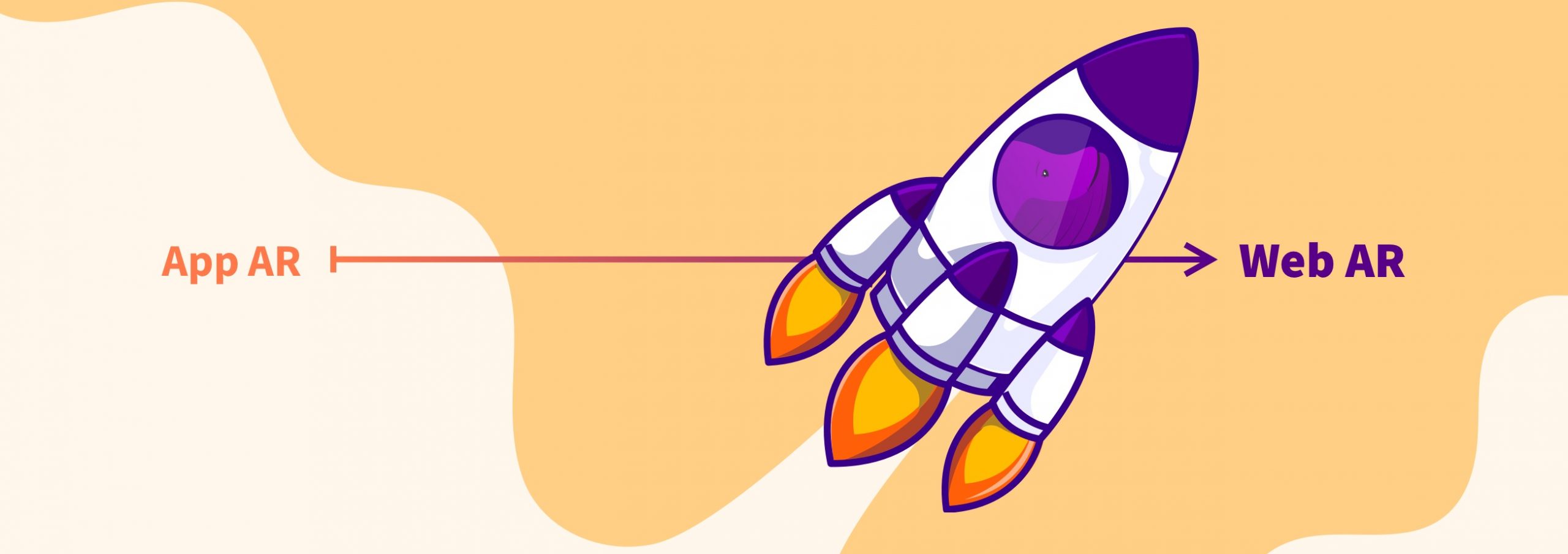The evolution of augmented reality: from Apps to Web AR
Contents
Augmented reality is a type of technology that is redefining the way we interact with our environment. It provides us with contextualised and valuable information about the world around us. The evolution of AR has meant that, through a mobile device (or future devices such as wearable glasses), we can obtain layers of visual information that add content to what we have in front of us: from an interactive user manual for installing a boiler, to nutritional information about the box of cereal we eat for breakfast; or from visual guidance to the boarding gate at the airport, to the ad that comes to life at the bus stop.
For example, here you can try yourself an experience of a step-by-step manual on a boiler, in web AR with image tracking. In fact this is one of the replicable templates of our AR Experience Library, so if you want to create it, here you have all the detailed information so you can do it in the easiest way.


This technology is also, like all innovative technologies, in a process of continuous evolution. It has the backing of many technological giants and is mainly driven by the world leaders in mobile technology, as far as the development of operating systems is concerned: Google and Apple.
In other words, augmented reality has all the ingredients to become a massive and mainstream technology in the coming years. Perhaps it was missing one detail to reach that stage, which, thanks to the appearance of augmented reality for web browsers (known as Web AR) can be achieved: completely eliminating the friction to access experiences, making it very easy to use and share, basically avoiding the use of AR through the download of mobile apps.
What is Web-based augmented reality?
As stated in the introduction, web AR is the ability to consume AR experiences from a web browser on a mobile device: Google Chrome from Android or Safari from iOS. These browsers have access to different capabilities of the operating system, with the user’s permission, such as the camera, gyroscope sensor or accelerometer. With the combination of all these sensors we are able to position augmented elements around us, and also track every movement of the camera to keep the content fixed in place.
The origins of app-based augmented reality
Obviously, as the name suggests, they are the set of AR experiences that must be consumed through a specific mobile app. That is, with the same case of the introduction where you see the parts of a boiler, the user would have to download a specific app (for example from the manufacturer or the distributor of the boilers), to access this information.
This has always generated a lot of friction for the end user, since unless he is obliged to keep an app on his device, he tends to try to reduce the size and number of apps on his terminal, as well as wanting immediate access to the information he is looking for.
It is true that AR in apps historically allowed the developer and the user to do more things, for a very simple concept: the app accesses the operating system directly, and therefore accesses more and better resources. In contrast, a web browser has an intermediate layer to access the same sensors of the mobile OS, and its access to resources is limited. For example, with the Ikea app you can visualize furniture anywhere in a room, thanks to these capabilities.
How did the web AR originate?
There are two essential moments that marked the possibility of adapting AR to the web world: the appearance of WebGL and the publication of Web Assembly or Wasm. WebGL is a set of libraries that allow 3D graphics to be rendered in the browser, essential for displaying content augmented with three-dimensional components. On the other hand, Wasm is an API for embedding C++ code within a web page. This is necessary for the processing of complex operations and algorithms, and consequently to provide the web with sufficient intelligence to carry out these types of complex experiences and calculations.
Wasm was released on March 15, 2015. From that moment on, gradually, browsers began to support it and therefore to open the door to innovation.
Today there are already web AR solutions compatible with a huge number of cell phones and browser versions.
The future of augmented reality
However, these limitations are gradually being broken down. There are more and more phone features available on the market and in the pocket of the users, and there are few things that can be done with an app that are not allowed through the web AR.
Therefore, the web option is already practically on a par with the app option in these limiting scenarios. If you want to know our detailed comparison between these two ways of generating and consuming augmented reality visit this post about the benefits of web AR vs app AR.
